When annotating, do your students underline most of what they’ve read because they think “it’s all important”? Maybe they’ve underlined that much because they don’t know how to determine what is important? Below are a few tips and photos from a demo lesson I gave to tackle this issue. And, yes, I used the pasta analogy 😉
The article for this lesson was about a village in Costa Rica that has chosen to raise and sell butterflies instead of clear cutting the rain forest. This movement started at a school with students taking the lead on the project before their parents and other community members became involved.
Tips
- I started by describing the reading strategy we would be using and introducing the pasta analogy. We are going to be reading an article very carefully and underlining key words and phrases that help us answer a particular question. You can read more about the pasta analogy in a previous blog. I use this analogy to help students understand that key words and phrases or “key details” are like pasta which we want to eat and the other words are like the water you boil the pasta in – which you don’t want to eat.

- Then I moved to activating (for some) and building (for others) prior knowledge by briefly discussing three photos related to the content of the article. I shared a map of the western hemisphere and pointed out where Costa Rica is in relation to the United States and then a photo of the rain forest in Costa Rica and a contrasting photo of what a rain forest looks like when clear cutting happens. There were no photos to support this in the article (I found all three online) and I felt like it was very important for students to understand where this takes place and this concept and how it influenced the village’s decision.
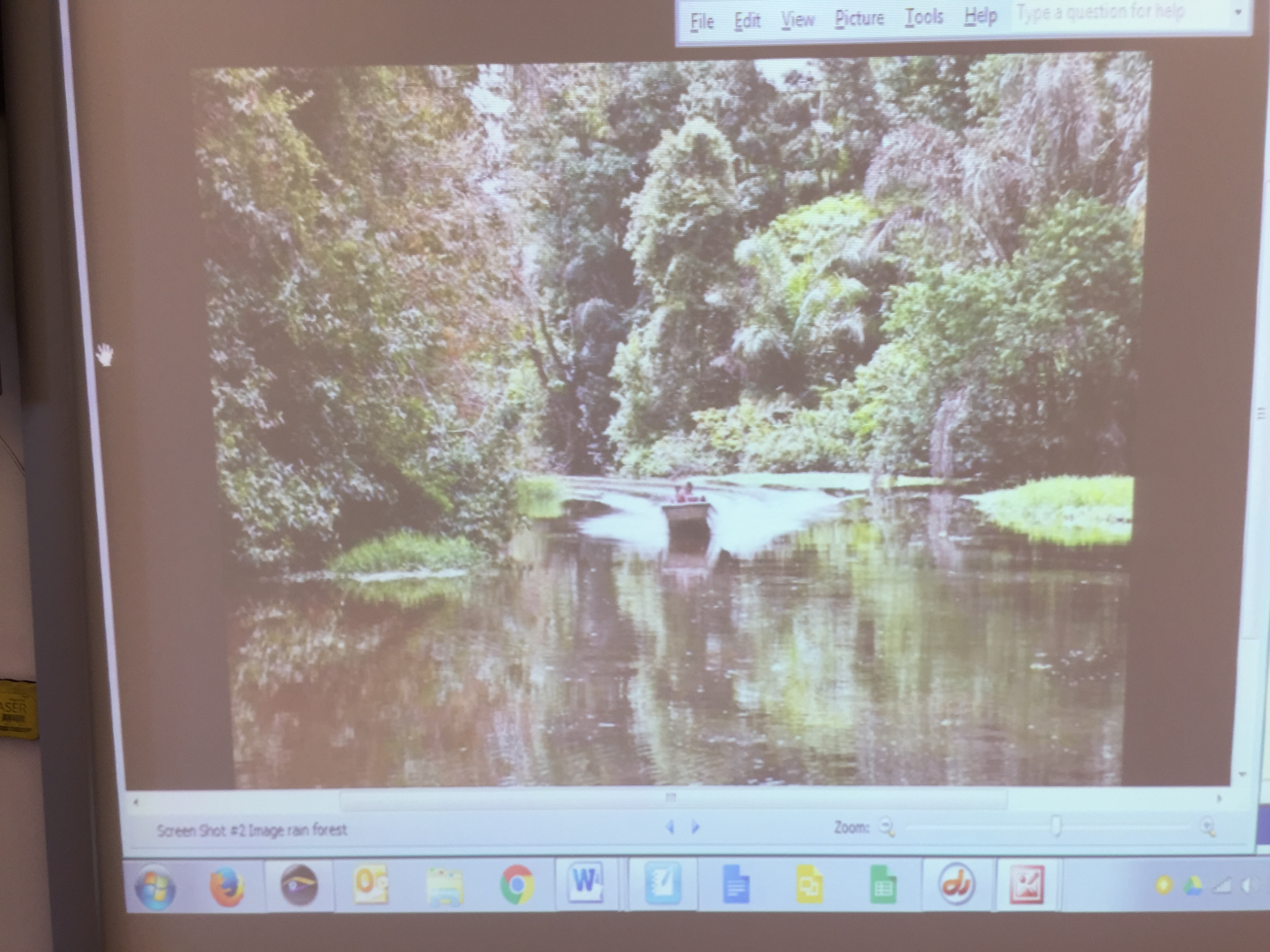
- Then I shared the purpose for reading which was posted on the front board and said something like: We are going to read an article about a village in Costa Rica that decides to NOT clear cut the rain forest. Butterflies help this community in some way. I engaged the students in reading the purpose posted on the front board.
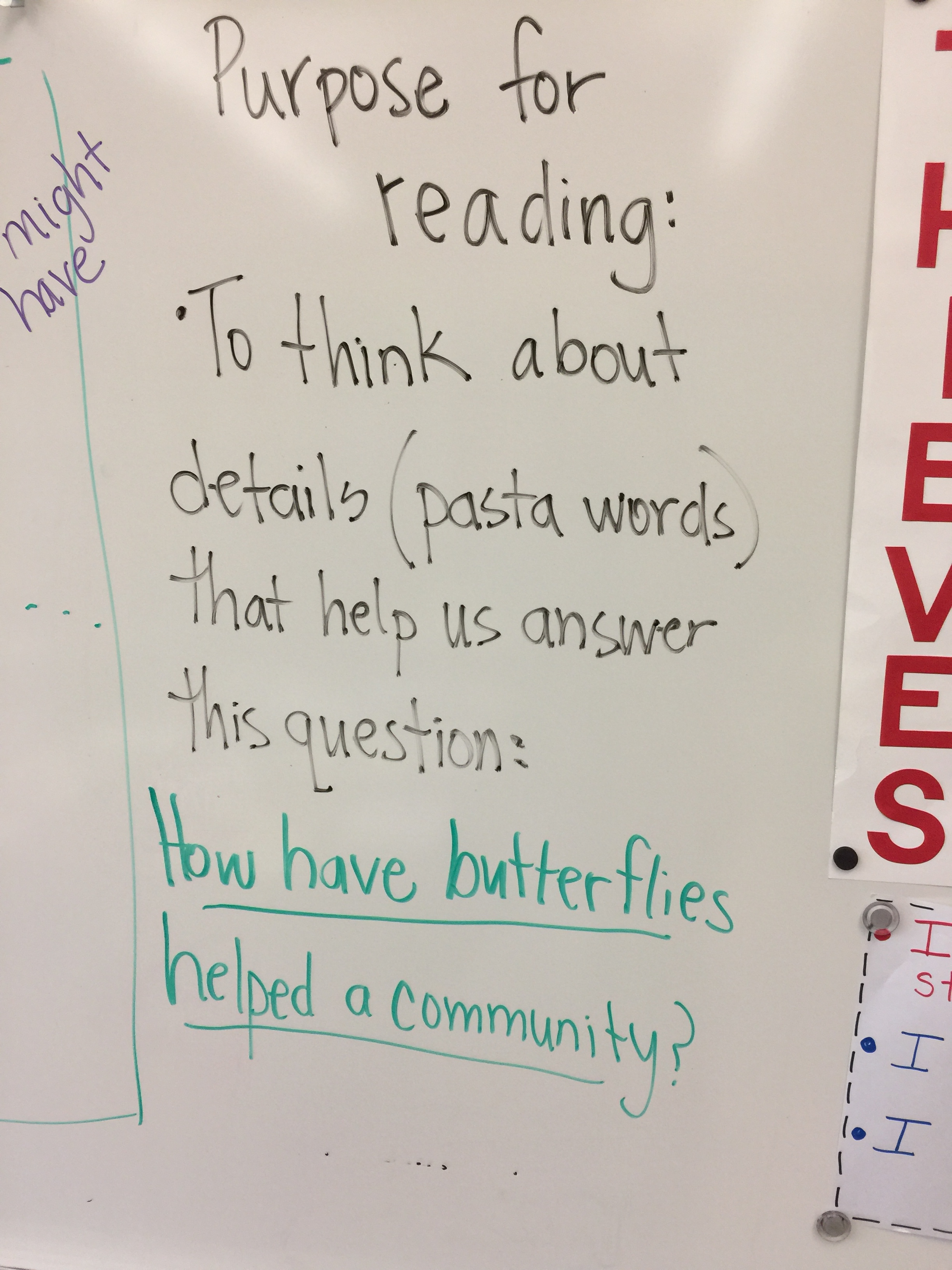
- In the ideal world the students would read the article in advance of this lesson to get a basic idea of the content. This was not the case for this demo lesson. Instead I asked the students to spend a moment using the THIEVES strategy to preview and make informed predictions about what the text would be about.
- With the text projected, I modeled reading the first paragraph, then rereading to think aloud for them about key words and phrases – including thinking aloud about why these were important words or phrases.
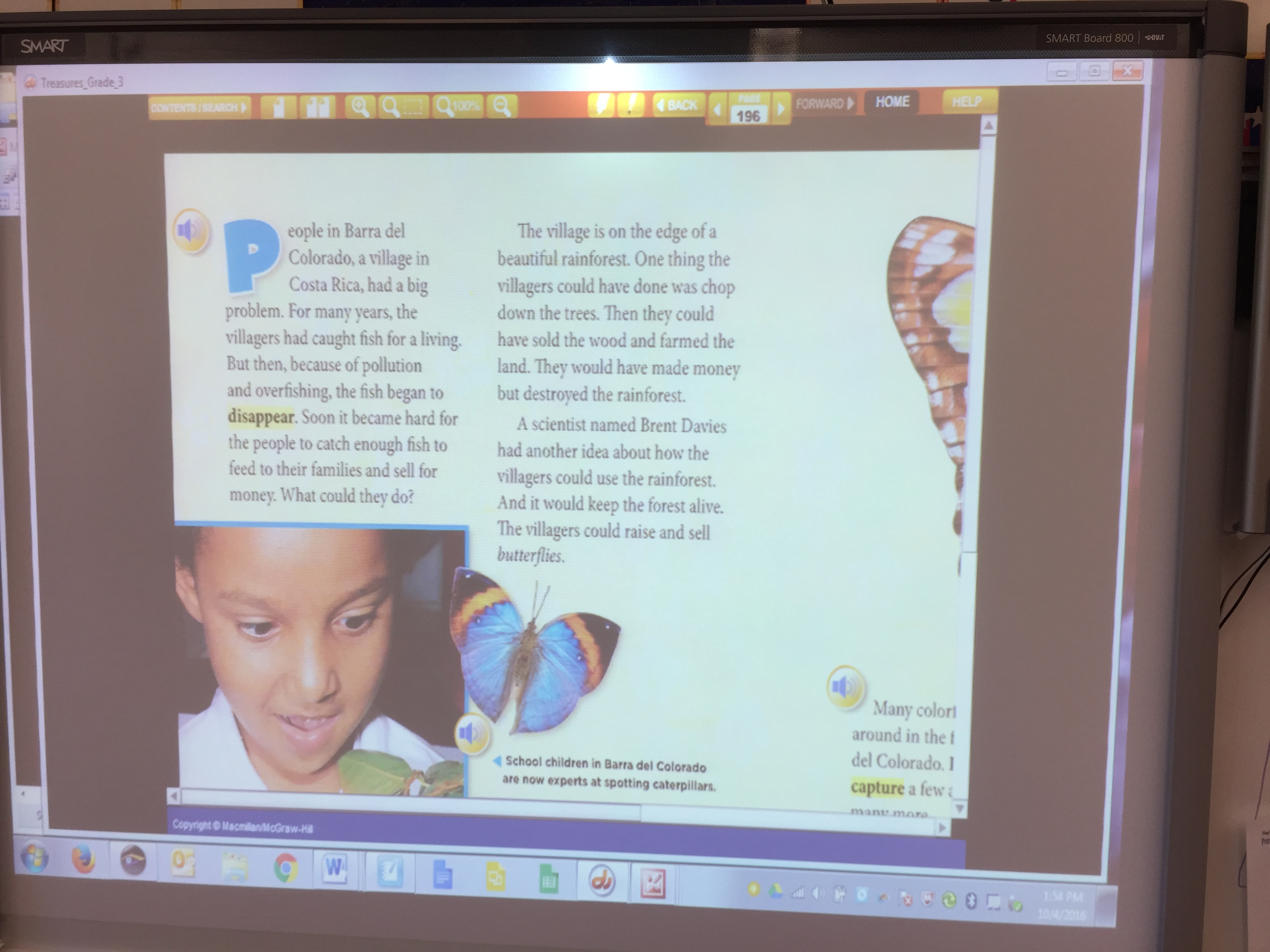
- The students had pieces of blank paper folded into quarters and I drew four quadrants on the dry erase board. (When we don’t have copies of the text to mark on, this is an alternative.) I wrote the key words and phrases for the first paragraph as I thought aloud. The students caught on and started contributing words to the list. They also copied these words onto their papers.
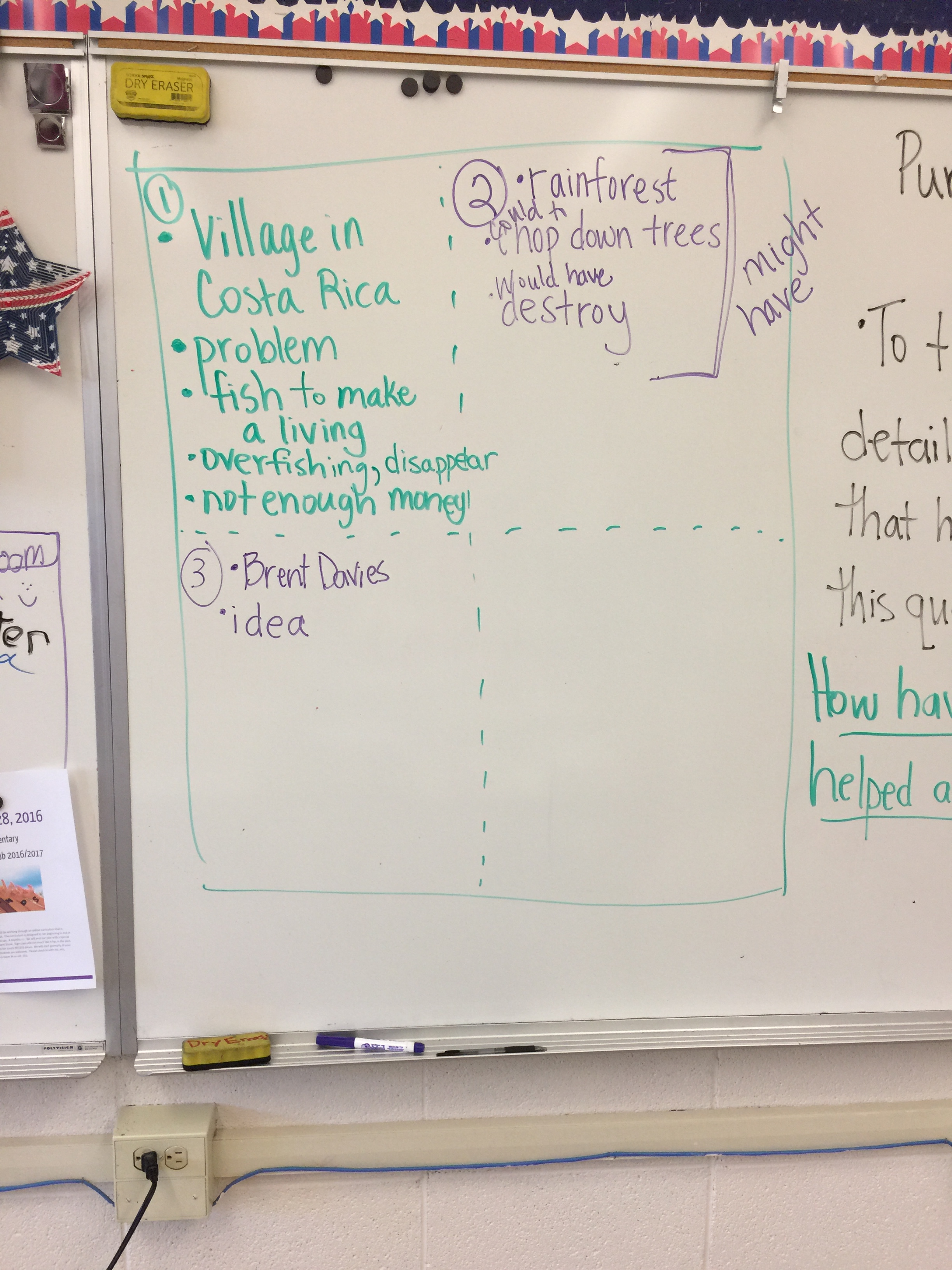
- I stopped and modeled using my key word list to summarize aloud what I’d learned–I did this with a student partner who brought her notes to the front.
- The class and I did a shared think aloud for the 2nd paragraph and listed words together. We stopped and thought aloud about what we’d learned in both paragraphs – with a partner – using the key words we’d written.
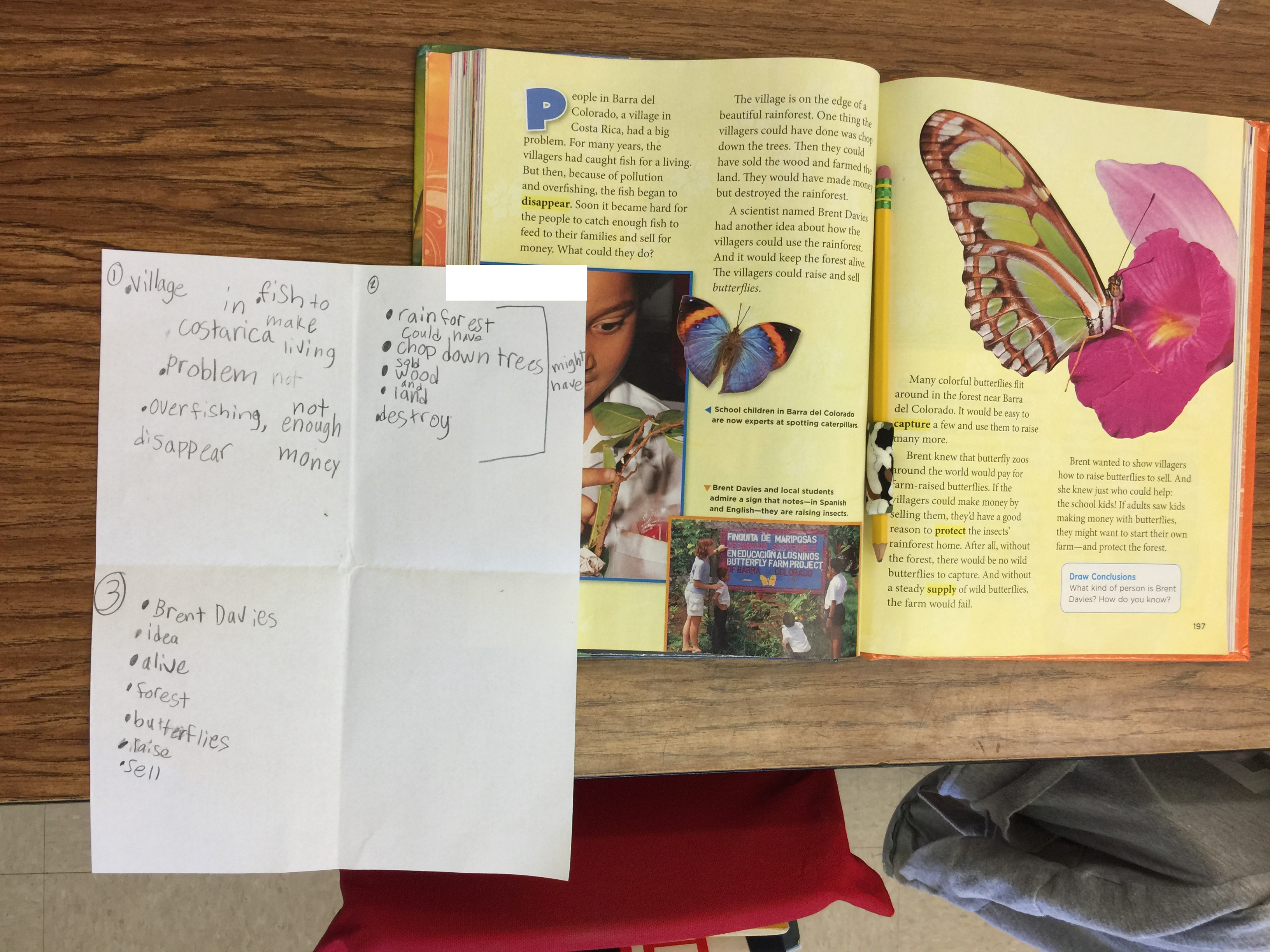
- I released responsibility to pairs for the 3rd and 4th paragraphs. They listed key words and stopped to summarize aloud with each other. Eventually, THESE NOTES CAN BE USED TO WRITE SUMMARIES OR HIGHER LEVEL THINKING RESPONSES TO THE TEXT.
- We wrapped up by discussing what we’d learned as well as the strategy of determining what is important.
The classroom teacher finished the next day by coaching the students in determining what was important for two more paragraphs. The text was an eight page article. That’s TOO LONG for this kind of reading and note taking. If you’re working with a text this long, I’d suggest jigsawing the following sections (after you’ve done one section together like we did) – assigning small groups to read a section of a text (from one subtitle to the next) and determining key words. Then when they jigsaw, they have to share what they learned with their new group. Another option is to choose a shorter text OR because they’ve read carefully the first section, ask them to finish reading without listing key words. That careful reading of the first section should launch them towards better understanding.
Hope this helps.
S
